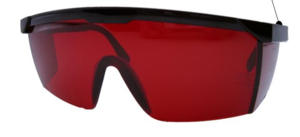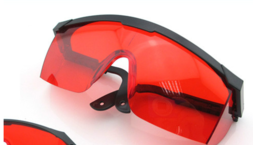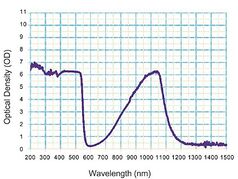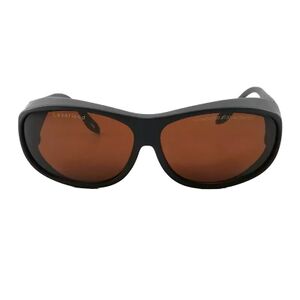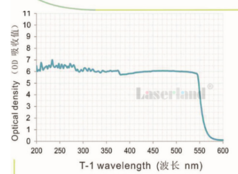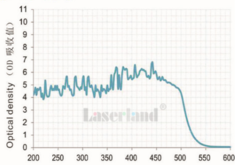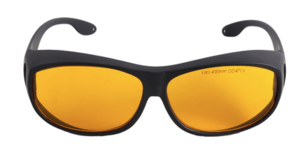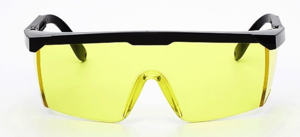Difference between revisions of "Dark period/ja"
(Created page with "暗期の最適なタイミングは、スケジュールによって異なります。ほとんどのスケジュールでは、'''夕方・夜'''の睡眠の約1〜3時間...") |
(Created page with " thumb 光感受性網膜神経節細胞(ipRGC)は、その性質上、松果体によるメラトニンの分泌を制御する。それらの...") |
||
| (4 intermediate revisions by the same user not shown) | |||
| Line 14: | Line 14: | ||
暗期の最適なタイミングは、スケジュールによって異なります。ほとんどのスケジュールでは、'''夕方・夜'''の睡眠の約1〜3時間前(デフォルトでは2時間前)に開始する必要があります([[Special:MyLanguage/Everyman|エブリマン]]ではコア、[[Special:MyLanguage/Dual core|二主相]]と[[Special:MyLanguage/TC1|TC1]]と[[Special:MyLanguage/TC2|TC2]]では最初のコア、そして[[Special:MyLanguage/Triphasic|三主相]]では夕方のコア)。 | 暗期の最適なタイミングは、スケジュールによって異なります。ほとんどのスケジュールでは、'''夕方・夜'''の睡眠の約1〜3時間前(デフォルトでは2時間前)に開始する必要があります([[Special:MyLanguage/Everyman|エブリマン]]ではコア、[[Special:MyLanguage/Dual core|二主相]]と[[Special:MyLanguage/TC1|TC1]]と[[Special:MyLanguage/TC2|TC2]]では最初のコア、そして[[Special:MyLanguage/Triphasic|三主相]]では夕方のコア)。 | ||
| − | + | * [[Special:MyLanguage/E1|E1]]と[[Special:MyLanguage/Siesta|シエスタ]]の場合では、コアの前に開始し、目覚めた直後に終了します。 | |
| − | * | + | * [[Special:MyLanguage/E2|E2]]、[[Special:MyLanguage/E3|E3]](延長含めて)、[[Special:MyLanguage/E4|E4]]では、最初の仮眠がコアから5時間以内であれば、その仮眠が終わるまで続きます。 |
| − | * | + | * [[Special:MyLanguage/Segmented|分割]]と[[Special:MyLanguage/Dual core|二主相]]の場合、12時間を超えない範囲で、コアギャップ(三主相ではコア1とコア2のギャップ)全体をカバーするべき。 |
| − | * | ||
| − | |||
==メカニズム== | ==メカニズム== | ||
| − | + | [[File:Melanopic.png | thumb]] | |
| − | [[ | + | 光感受性網膜神経節細胞(ipRGC)は、その性質上、松果体によるメラトニンの分泌を制御する。それらの光に対する感度は、目の中の錐体と桿体によって提供される通常の視覚とは独立しています。ipRGCの感度は480nmでピークに達し、両側で低下します。<ref name="cie15" />暗期には、すべての光がメラトニンをある程度抑制するため、光を完全に避けることが望ましいが、多くの人のライフスタイルにとって合理的ではありません。むしろ、できるだけ明るい光を避け、必要な黄色、オレンジ、赤の光だけに限定して、メラトニンの抑制を可能な限り抑えるのがベストです。 |
| − | |||
| − | |||
==方法== | ==方法== | ||
Latest revision as of 03:39, 2 August 2021
暗期は、長い睡眠ブロックがない状態で概日リズムを安定させ、SWSの質を高める方法です。また、特定の健康問題が発生するのを防ぐこともできます。ほとんどのスケジュールでは、暗期は夜の(SWSピークに近い)睡眠ブロックの1〜3時間前(ほとんどの場合は2時間前が推奨)に開始し、その後約8〜12時間継続します。
根拠
現代の電気照明が登場する以前、夜の間に光の少ない安定した時間帯を持っていました。これにより、概日リズムが安定し、自然な昼夜のサイクルと同期していました。
現代人は夜に電気をつけることが多い。これは、すでに真夜中であってもかかわらず、体がまだ昼間だと勘違いしてしまうため、日に日に眠くなる時間が遅くなる理由の一部です。[1]単相睡眠の場合では、長い睡眠時間の間でやや短い暗期を維持することで、概日リズムを比較的安定に保てます。
しかし、このような長い睡眠ブロックを持たない多相睡眠者にとっては、これは問題となります。人工光が24時間存在するため、メラトニンの生成が抑制され、SWSの質が低下してしまいます。これでは概日リズムの乱れからさまざまな健康問題につながるため、適応を余計に難しくしますし、不健康にもなります。[2]そうならないためには、多相睡眠者(および単相睡眠者も)は、青、緑、または白(青と緑の両方を含む)の光が目に入らない暗期を設ける必要があります。
タイミング
暗期の最適なタイミングは、スケジュールによって異なります。ほとんどのスケジュールでは、夕方・夜の睡眠の約1〜3時間前(デフォルトでは2時間前)に開始する必要があります(エブリマンではコア、二主相とTC1とTC2では最初のコア、そして三主相では夕方のコア)。
- E1とシエスタの場合では、コアの前に開始し、目覚めた直後に終了します。
- E2、E3(延長含めて)、E4では、最初の仮眠がコアから5時間以内であれば、その仮眠が終わるまで続きます。
- 分割と二主相の場合、12時間を超えない範囲で、コアギャップ(三主相ではコア1とコア2のギャップ)全体をカバーするべき。
メカニズム
thumb 光感受性網膜神経節細胞(ipRGC)は、その性質上、松果体によるメラトニンの分泌を制御する。それらの光に対する感度は、目の中の錐体と桿体によって提供される通常の視覚とは独立しています。ipRGCの感度は480nmでピークに達し、両側で低下します。[3]暗期には、すべての光がメラトニンをある程度抑制するため、光を完全に避けることが望ましいが、多くの人のライフスタイルにとって合理的ではありません。むしろ、できるだけ明るい光を避け、必要な黄色、オレンジ、赤の光だけに限定して、メラトニンの抑制を可能な限り抑えるのがベストです。
方法
ゴーグル
The most popular and versatile method for achieving a dark period is through the use of red-coloured laser goggles (colloquially known as "DP goggles" in the Discord community). There are several types of these available, and below is a comparison between their light-filtering lens tints.
Notes:
- The dark red goggles may be too dark and reduce vision, but this would be useful during daylight hours or in bright environments.
- The light red goggles let in substantially more red and green light than the orange one, but less yellow. The overall brightness appears to be slightly higher for the orange one, but the orange one allows for more colour perception. Based on the melanopic sensitivity function, both should provide similar levels of protection against melatonin suppression.
- There is a significant price difference between the first two and the third and the fourth one. However, the third and fourth ones have better quality (fewer rough edges on the plastic, more uniform transparency, and provide more options).
赤い室内照明
If you live in a space where you are in control of the lighting, it is possible to use either RGB or pure red LED lights during dark period to avoid the inconvenience and/or discomfort from wearing goggles. However, you must still be sure that you wear dark period glasses when looking at screens such as your electronic devices, and if you live in an area with bright lights outside your house, it is best to draw your blinds (blackout curtains ideally) in order to block any external light.
青色光フィルター
| Name | OS support | Automated? | Note |
|---|---|---|---|
| SunsetScreen | Windows | Yes | last full free version |
| F.lux | Windows, Linux | limited | faq link |
| Redshift | Linux(X11), Windows(limited) | Yes | configuration last full free version |
| iOS&macOS native feature | iOS, macOS | No | tutorial |
| NegativeScreen | Windows | No | free download |
For all of these software packages, you should change the color temperature to the lowest possible usable value (1000K for redshift, 800K for f.lux).
For the purpose of DP management on Windows OS, SunsetScreen is the preferable choice over the widely more popular f.lux, as the latter does not allow setting user defined start and beginning times in conjunction and enforces a preset duration for the color shift, which will not be optimal for many schedules, to circumvent this, the user has to manually shift down the color temperature (by repeatedly pressing "Shift+Alt+Page Down" key), moreover, this custom setting is not stored and overwrites the automatic color shift timing, forcing the user to repeat the same procedure at least once per day. Additionally, SunsetScreen allows setting predefined values for brightness for day and night setting separately and offers the option of toggling a color inversion mode by hotkey.
An alternative, potentially more effective, method of software based color filtering is employed by NegativeScreen. It offers 12 different predefined color modification schemes, which tend to produce more usable and vastly more customizable results (it is possible to create custom inversion profiles with the help of a GUI application) than the more basic color inversion software like the integrated Windows color inversion mode. Of particular interest for the purpose of DP management is the "inverted red" mode, which drastically reduces the amount of visible light emitted by the display (especially when originally light colored content was presented on the screen), while having a similar color shifting effect to the other software presented above.
For Linux on Wayland, please use the night light options offered by your desktop environment (KDE and GNOME offer this feature). Editing the color temperature manually might be necessary to achieve the amount needed. Change color temperature on GNOME
Note that, even with all the red color filtered away, all screens, except for OLED screens on some phones, will bleed backlight, which is white and can compromise your dark period. Depending on the quality and brightness setting of your screen, this may or may not be an issue.
暗期を含む日々の暮らし
Using any of the above methods to achieve a dark period should limit the accuracy of your perception of non-red lights during your dark period. This may impair you ability to do certain tasks. However, there are some methods to mitigate this.
単色フィルター
Using red goggles or red filters can make it difficult to see certain colors on your screen. To solve this problem, you may wish to temporarily remove colors on your screen with a monochrome/greyscale filter. Here are some ways to do it:
On iOS and macOS, go to Accessibility > Display > Color Filters, turn on Color Filters and select “Greyscale”
On Android, open up Settings, then tap Digital Wellbeing & parental control, then choose Wind Down, you can set up a schedule for the evening, which will turn your screen greyscale for the scheduled time. Alternatively, go to Settings > Developer Options > Simulate colour space and choose Monochromacy. (For this, you need to have Developer Options enabled. link)
On GNOME, you can use the extension Desaturate All (remember to checkout to the feature branch) to turn your display monochrome with the click of a button. It is possible to use switch back and force between red-only and red-greyscale mode to make a rough estimate of the underlying colour (this also applies to other methods).
On Windows 10, you can use the key combination Ctrl + Windows + C to toggle a grayscale filter. This can be configured by finding Turn color filters on or off from the start menu.
カラーピッカー
When there is a need to determine some colours with precision, it is best to use a colour picker program. These programs grabs a pixel from your screen and records the brightness value in each of the subpixels.
度付き眼鏡
If you need prescription glasses for vision correction, you may wear both at the same time via any of the three methods listed below.
ゴーグルの上から掛ける
Wearing your prescription glasses outside the goggles is the preferred option for the first and second goggle types on the table, as there is less light leakage.
眼鏡の上からゴーグル
It may be possible to wear most styles of corrective lenses inside of dark period goggles, depending on the model of your goggles. The orange and yellow goggles as pictured in the above table can fit over many glasses models, but it may not be particularly comfortable, depending on the shape of the prescription frames.
レンズをゴーグルに接着する
This might be the most comfortable option once completed. Detaching your prescription lenses from their frames and glue them to the top of your goggles. Hot glue will not melt either the lenses or the first two goggles (the others have not been confirmed).
Tips:
- Choose the glasses that match in curvature with your goggles, so it would be easier to attach.
- Seal the gap completely around to prevent moisture from getting in, as it will be extremely difficult to remove afterwards.
- Perform the operation in a dry and preferable cold environment to minimize the amount of moisture in the gap. Failure to do so can result in the goggles fogging up in cold environments.
Warnings:
- Might cause slight dizziness at first due to axial misalignment. Try holding your prescription lenses in front of and behind your dark period goggles while they're on your face to determine which feels better before gluing them.
- The glue will not be easy to remove once attempted.
関連アドバイス
断食期間
It is recommended that you maintain a fasting period that covers the entirety of your dark period, as food is also an important zeitgeber, or circadian cue. Intermittent fasting has been anecdotally suggested to work well with polyphasic sleep. It is preferable to eat during the day rather than at night. A breakfast helps set the circadian day start. Water may be consumed, but any xenobiotic consumables will disrupt your circadian rhythm.
運動
Intense exercise such as strenuous weight lifting and long-distance running should be avoided during dark period, as this might disrupt the circadian rhythm.[4] In addition, exercise may also disrupt sleep and/or increase sleep onset as a result of increased heart rate. However, during adaptation, it might be desirable to use exercise as a means to stay awake. Choose mild exercise routines and do not exercise for an extended period of time to avoid circadian disruption or sleep onset issues; both of which may hinder your sleep quality and harm your adaptation.
関連項目
- Crimsonflwr's free and comprehensive dark period course (registration to polyphasic.net required).
- Crimsonflwr's dark period calculator. Refer to the above course for instructions regarding usage.
参考文献
- ↑ Joo EY, Abbott SM, Reid KJ, Wu D, Kang J, Wilson J, Zee PC (April 2017). "Timing of light exposure and activity in adults with delayed sleep-wake phase disorder". Sleep Medicine. 32: 259–265. doi:10.1016/j.sleep.2016.09.009.
- ↑ Brainard J, Gobel M, Scott B, Koeppen M, Eckle T (May 2015). "Health implications of disrupted circadian rhythms and the potential for daylight as therapy". Anesthesiology. 122 (5): 1170–1175. doi:10.1097/ALN.0000000000000596. PMC 4632990. PMID 25635592.
- ↑ CIE TN 003:2015, Report on the First International Workshop on Circadian and Neurophysiological Photometry, 2013, published 2015
- ↑ Wolff CA, Esser KA (2019). "Exercise timing and circadian rhythms". Current Opinion in Physiology. 10: 64–69. doi:10.1016/j.cophys.2019.04.020. ISSN 2468-8673.
